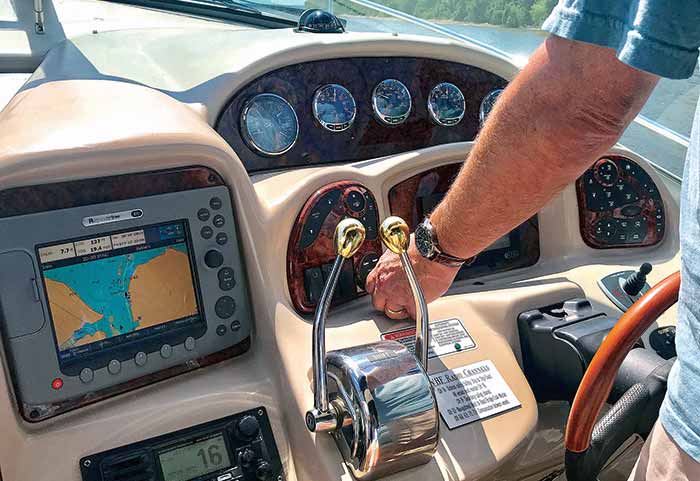When it comes to the electronics on our boats, we should all know our AC from our DC — but what about PC? No, not political correctness — we’re talking post-Covid. Yes, we’re well aware the virus hasn’t disappeared from daily life, but its role in the marine manufacturing world has diminished significantly. The pandemic led to supply-chain backlogs, leaving manufacturers struggling to meet demand for existing products, much less develop next-generation merchandise. This explains why the introduction of new tech and gear has been sparse these last few years.
We noticed a shift mid-2022 when the well-known brands starting teasing our BoatUS Magazine editors with bona fide innovative stuff. We got a sneak peek from the industry last fall, so as the 2023 season creeps closer, allow us to showcase what’s cool, hot, and new in the world of “PC” marine electronics.
Blind Spot Eliminator
Docking a boat can be difficult when you can’t see past the bow or across the transom, an issue now addressed with the Garmin Surround View Camera System. Stitching together the view from six different cameras, Surround View gives you 360-degree views at the helm, and creates a live “bird’s-eye” view looking down on your boat. You can also set a “visual bumper” indicator on the screen so you know when a dock, pier, or another boat is about to violate a preset barrier limit. Distance markers also help ascertain exactly how close your boat is getting to any object and, if desired, you can pull up each camera’s view individually. OEM, so look for pricing as an option on a new boat | Garmin.com


 Garmin Surround View Camera System provides eyes in the back of your head.
Garmin Surround View Camera System provides eyes in the back of your head.
 The entire Garmin GPSMAP line now comes with standard Navionics cartography.
The entire Garmin GPSMAP line now comes with standard Navionics cartography.
 Saltwater anglers can see through the brine out to 350 feet with LiveScope XR from Garmin.
Saltwater anglers can see through the brine out to 350 feet with LiveScope XR from Garmin.
 The new Fathom lithium-ion power management system does it all.
The new Fathom lithium-ion power management system does it all.
 Twin Disc figured out how to add joystick control to straight-shaft inboards.
Twin Disc figured out how to add joystick control to straight-shaft inboards.
 TracPhone LTE-1 packs satellite, cellular, Wi-Fi, modem, and GPS into one dome.
TracPhone LTE-1 packs satellite, cellular, Wi-Fi, modem, and GPS into one dome.

